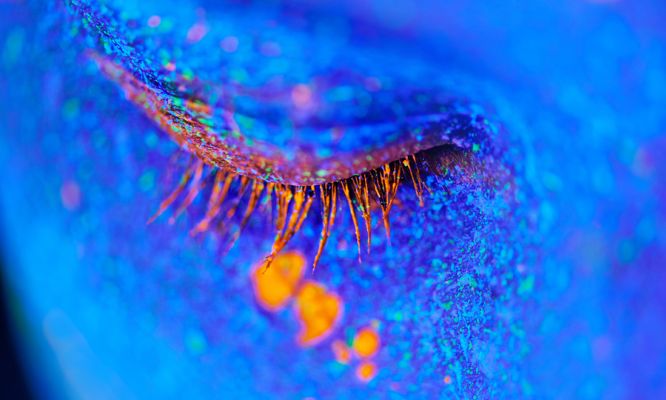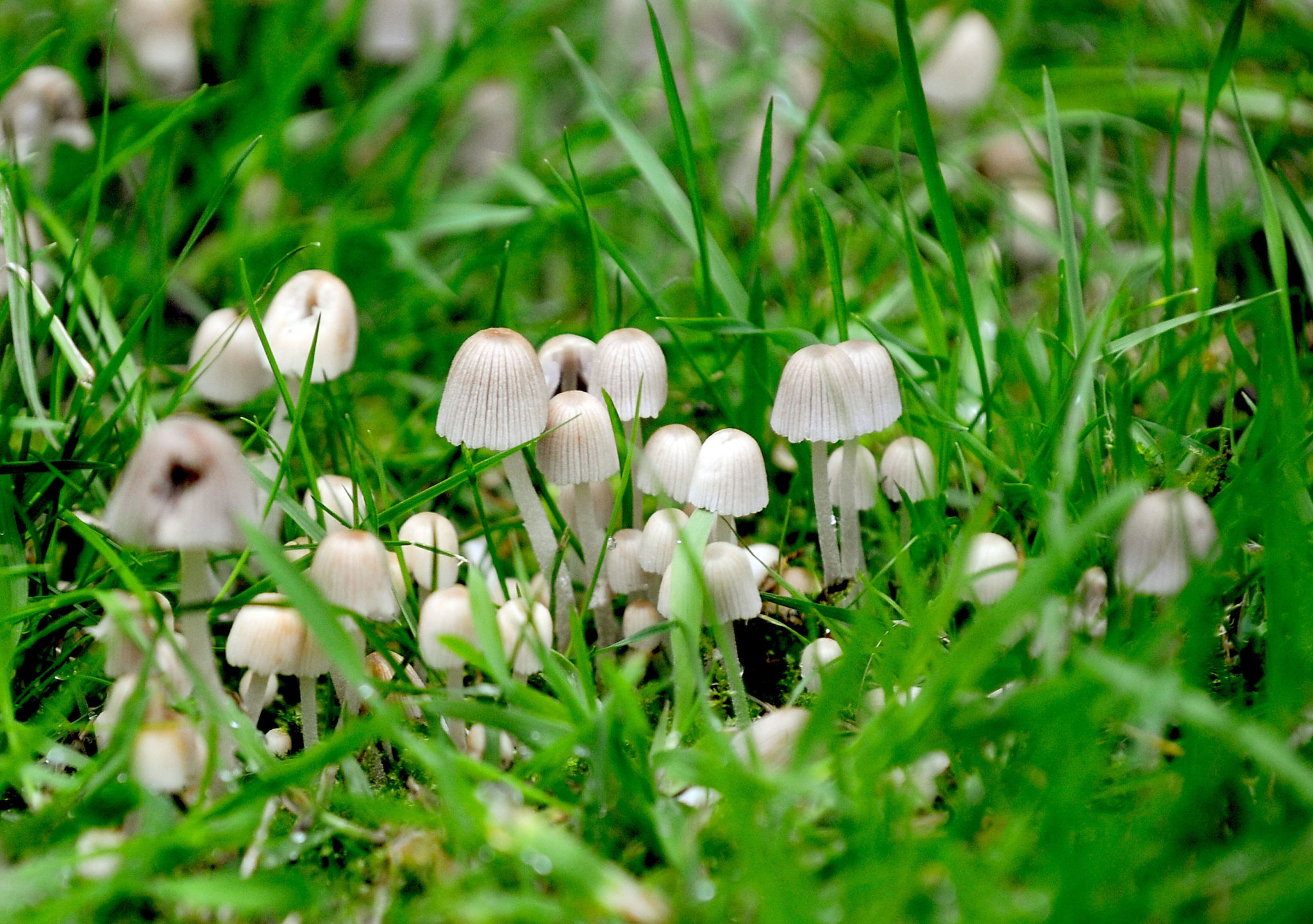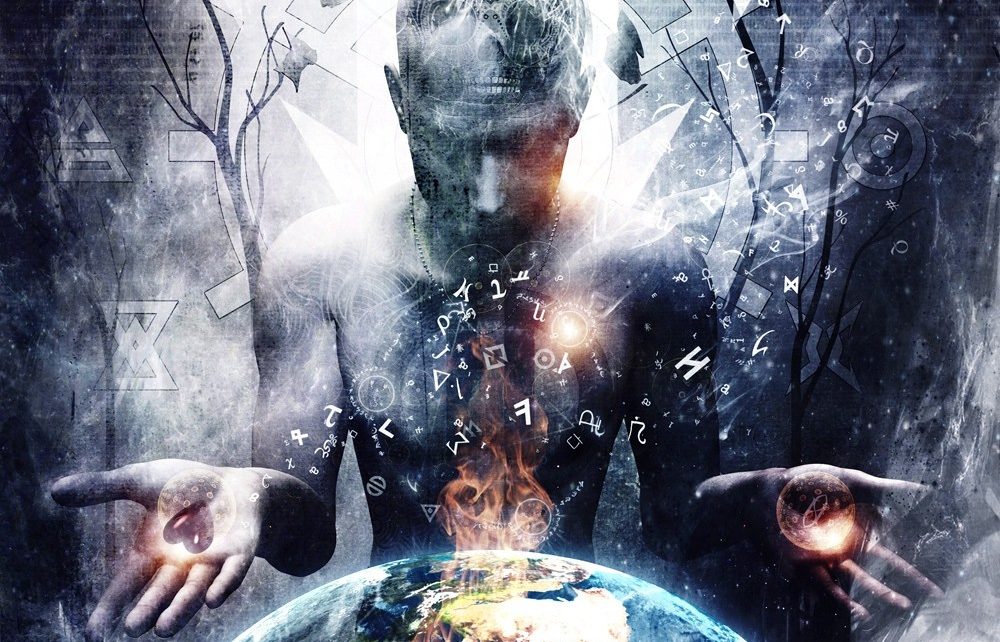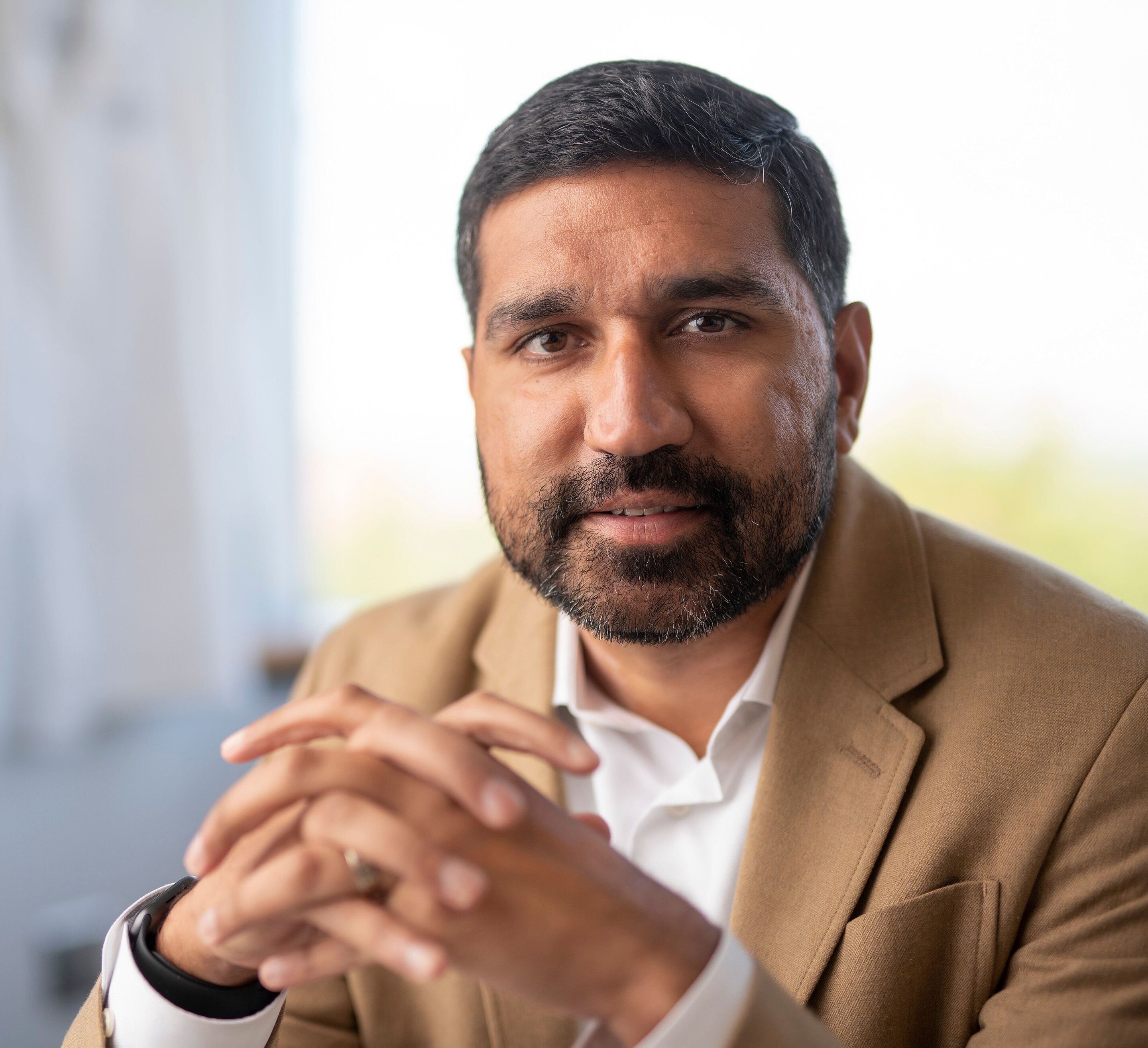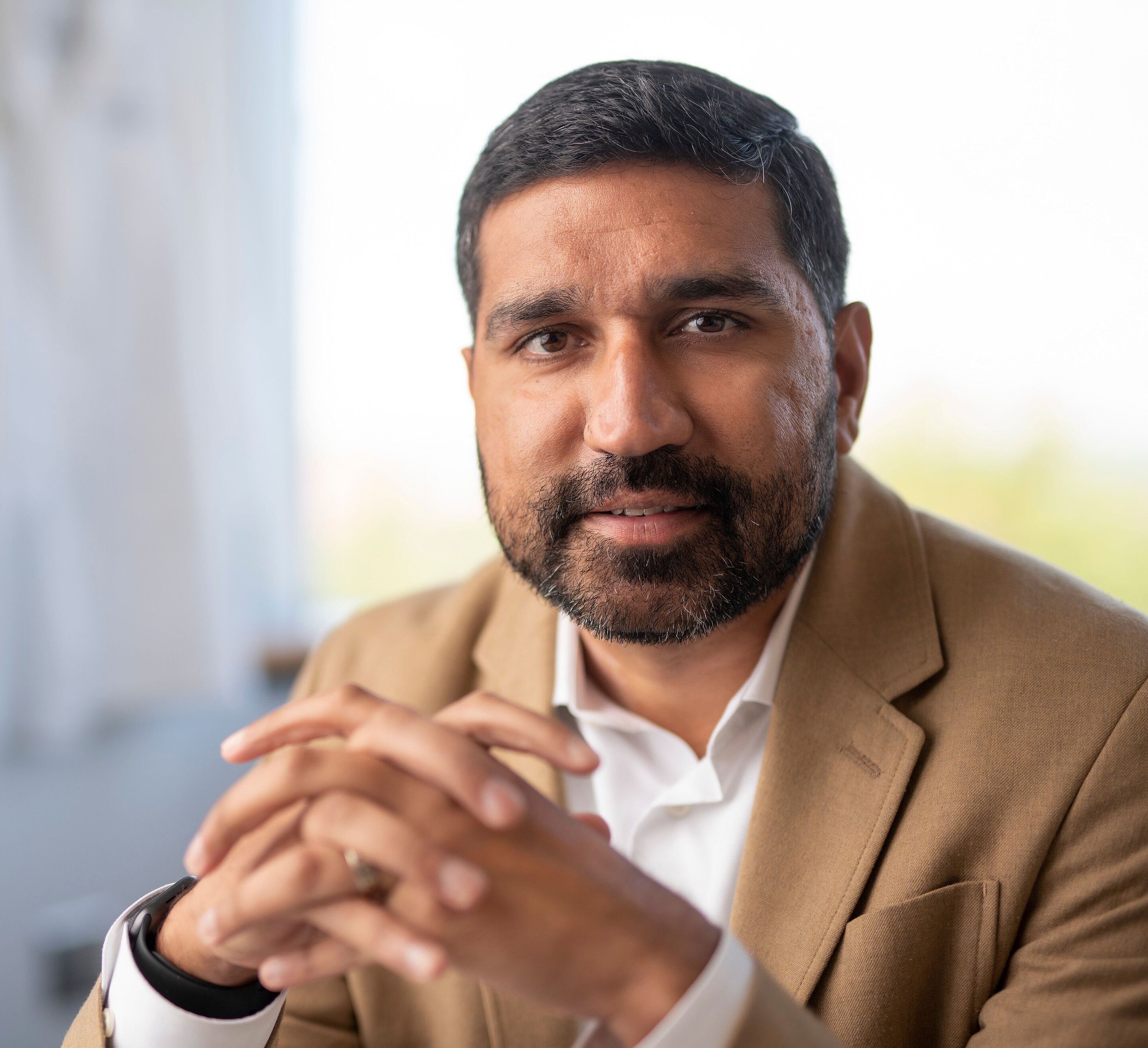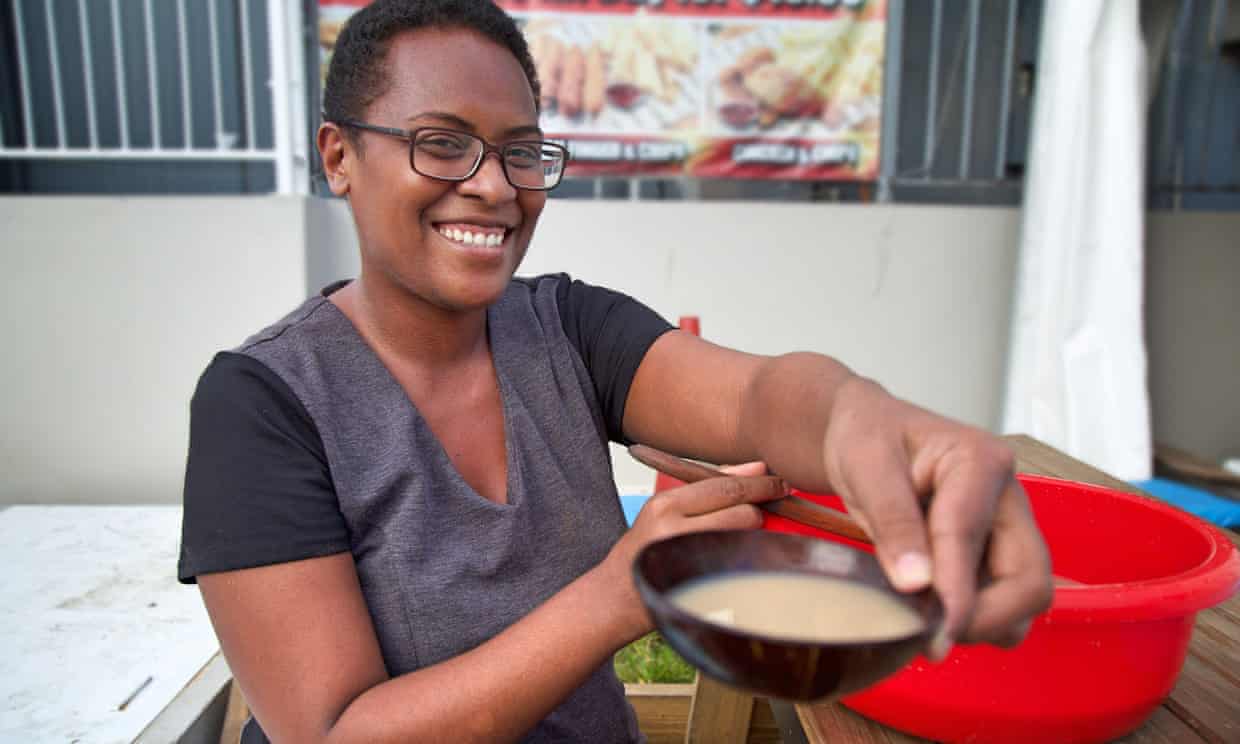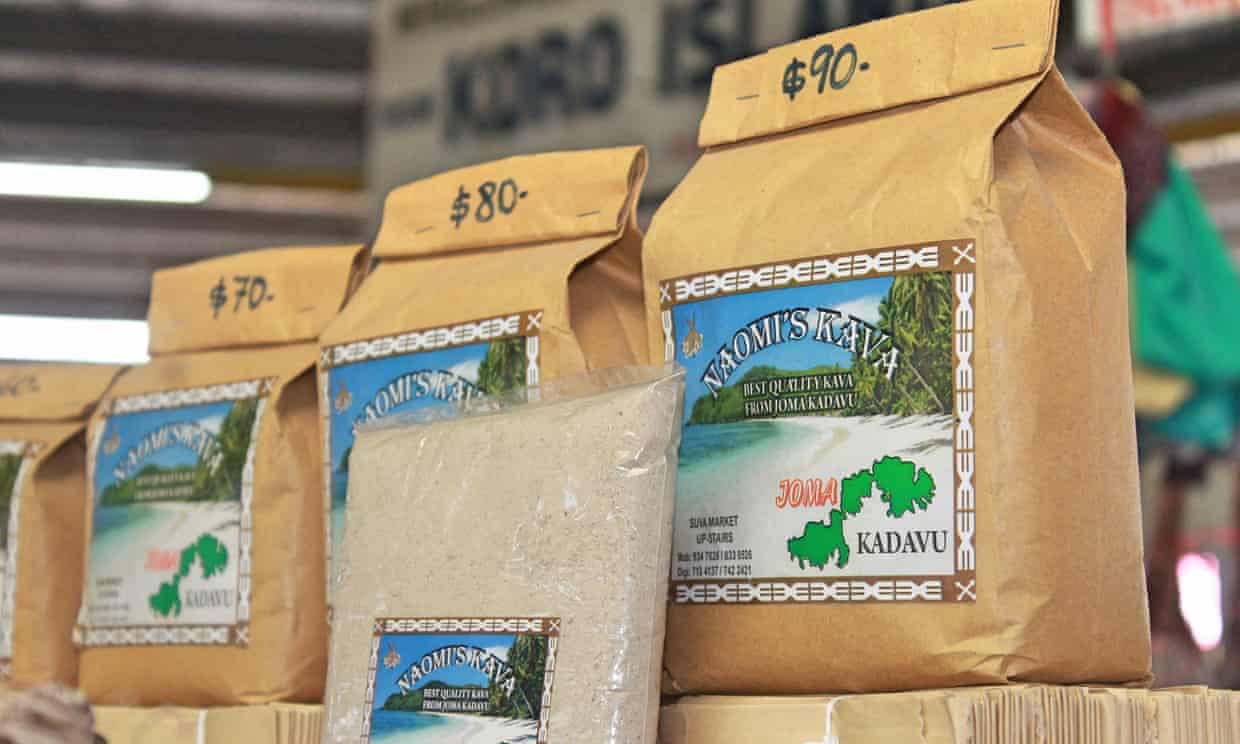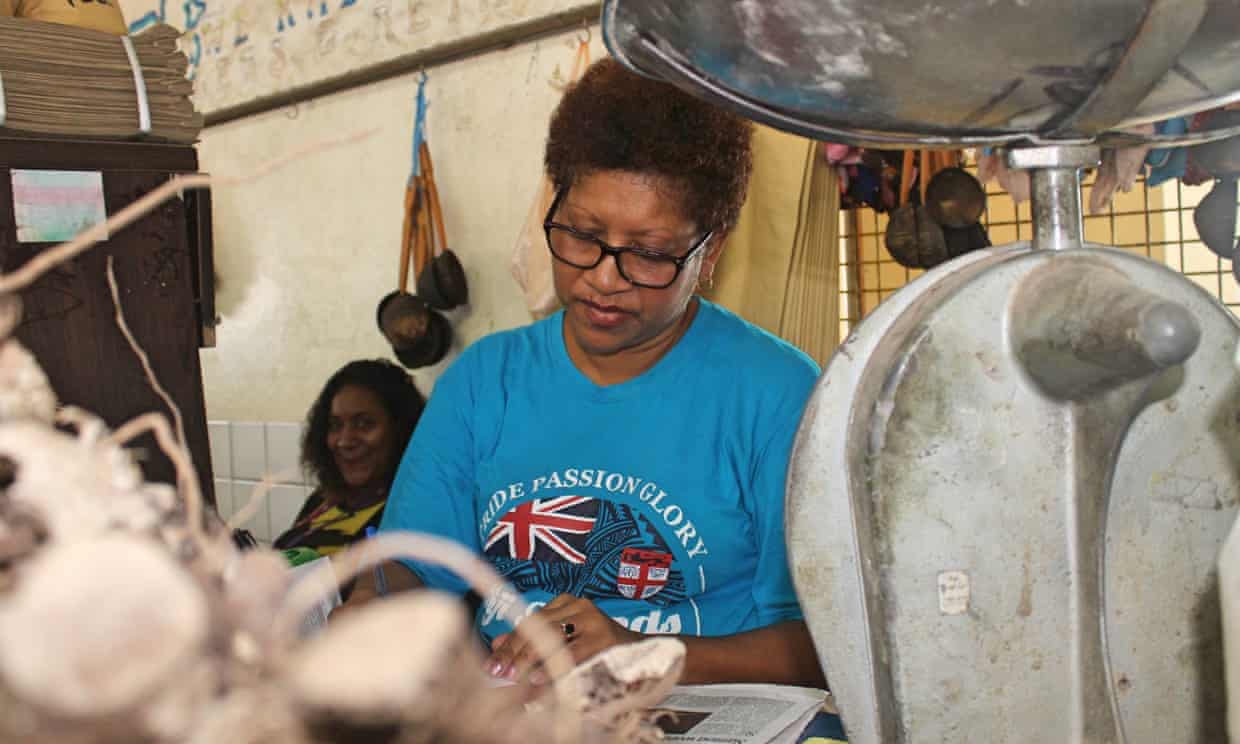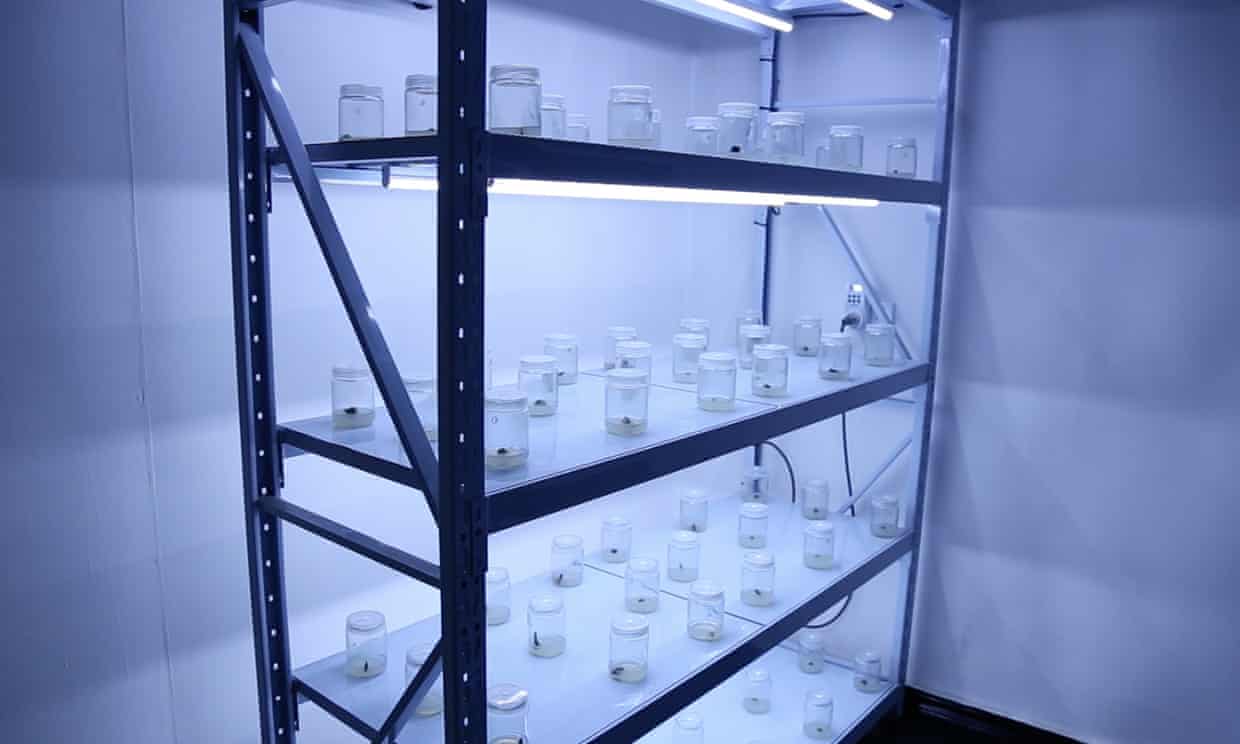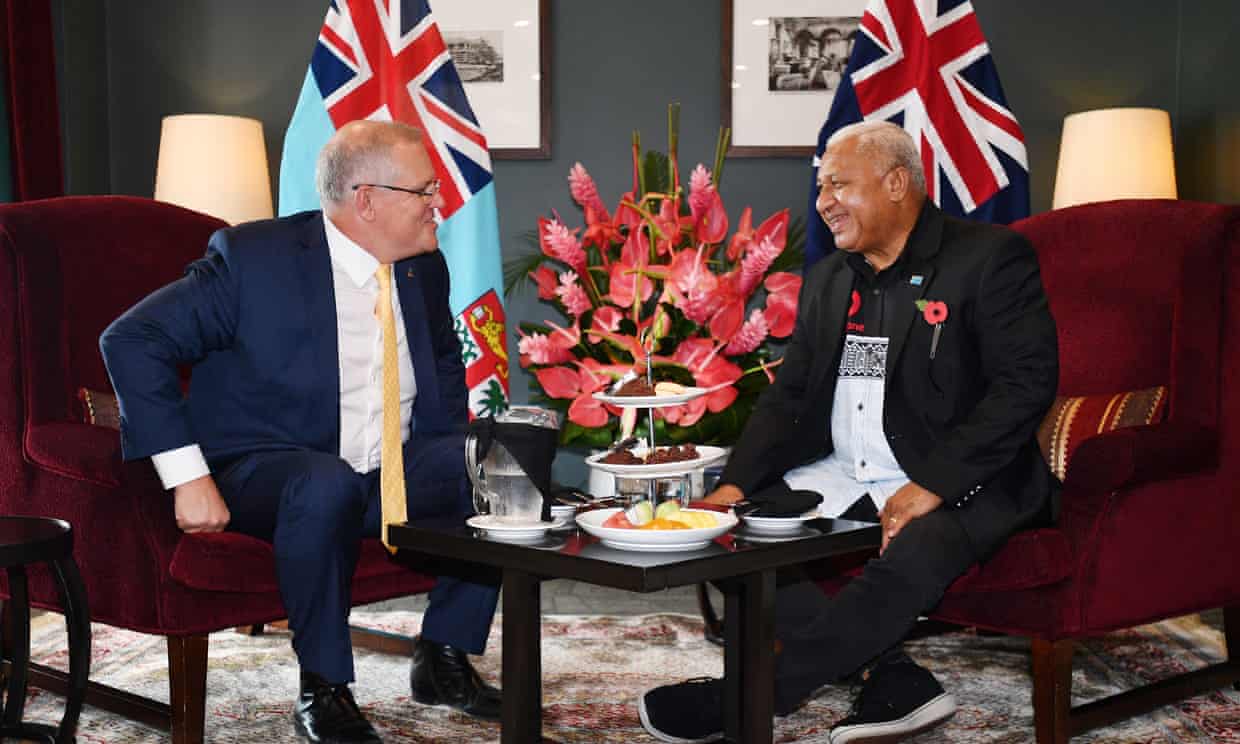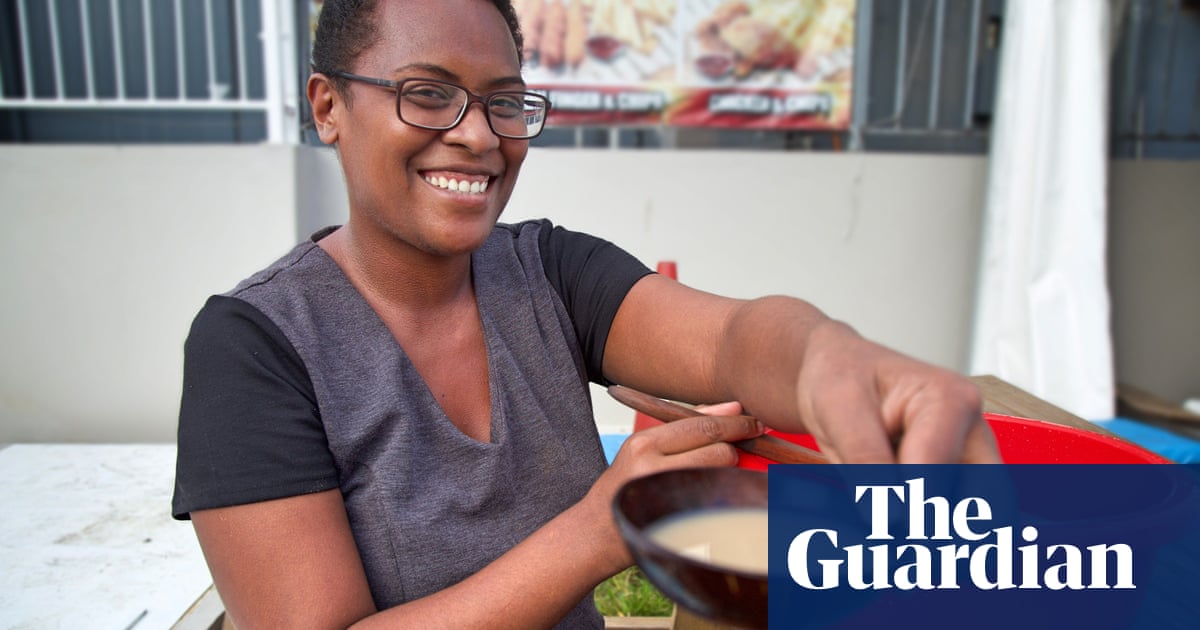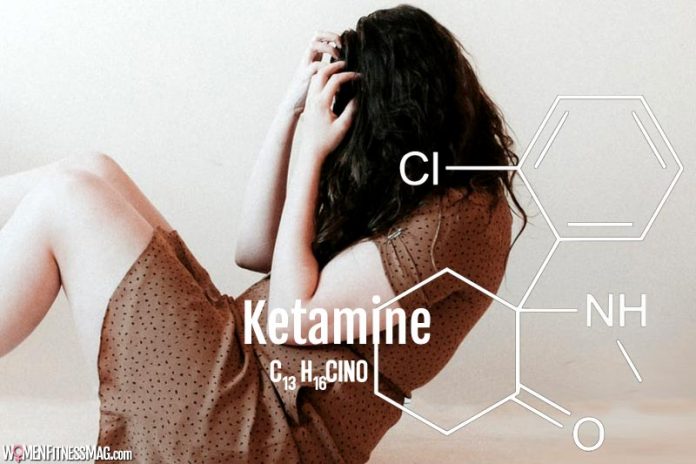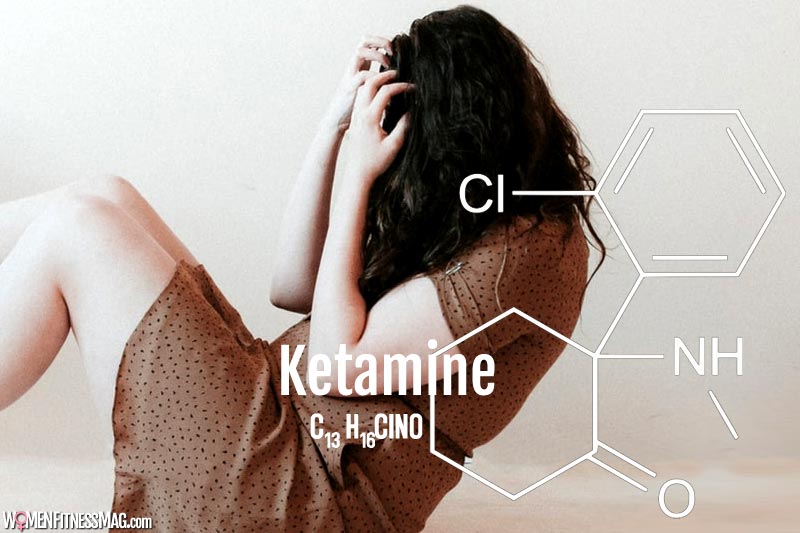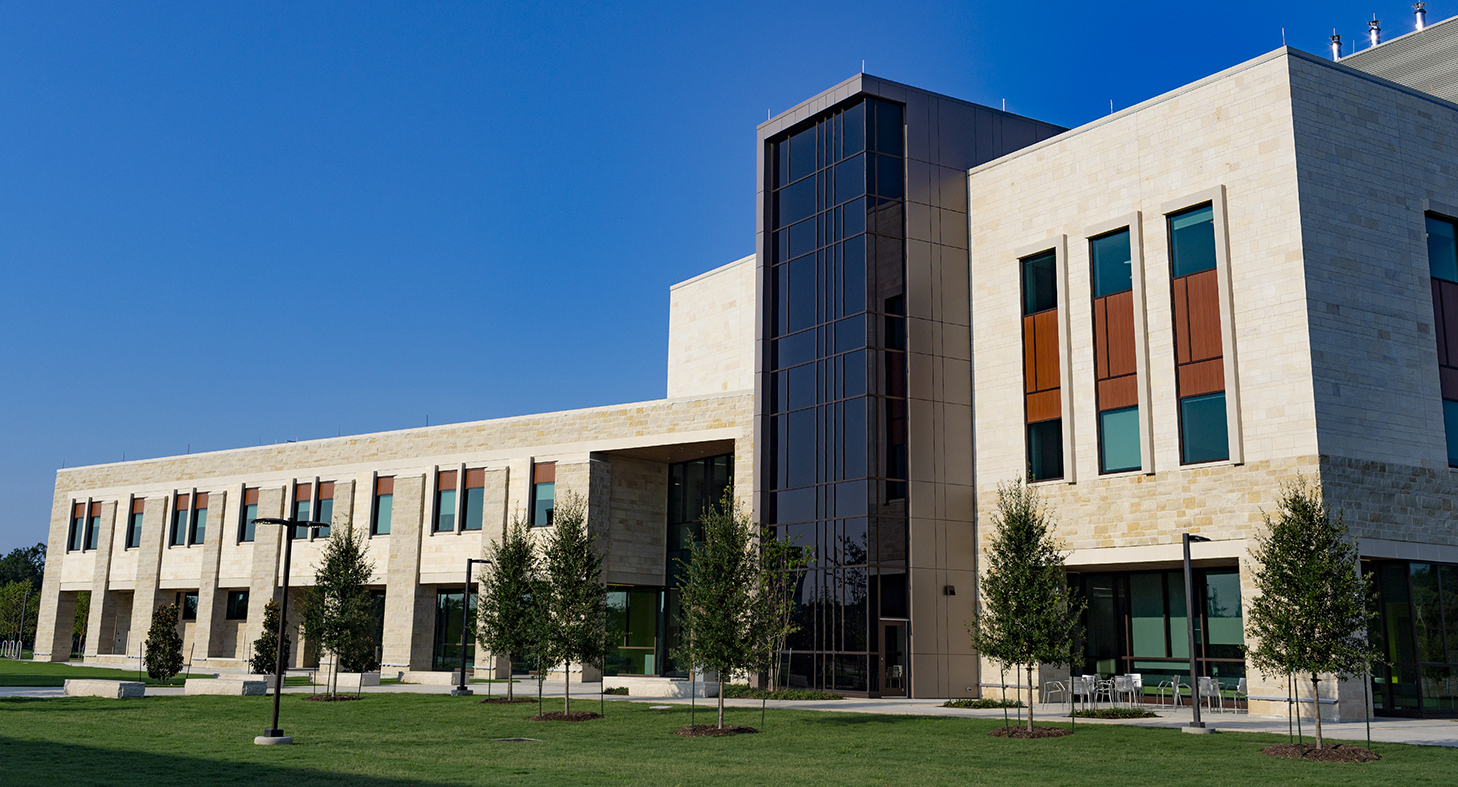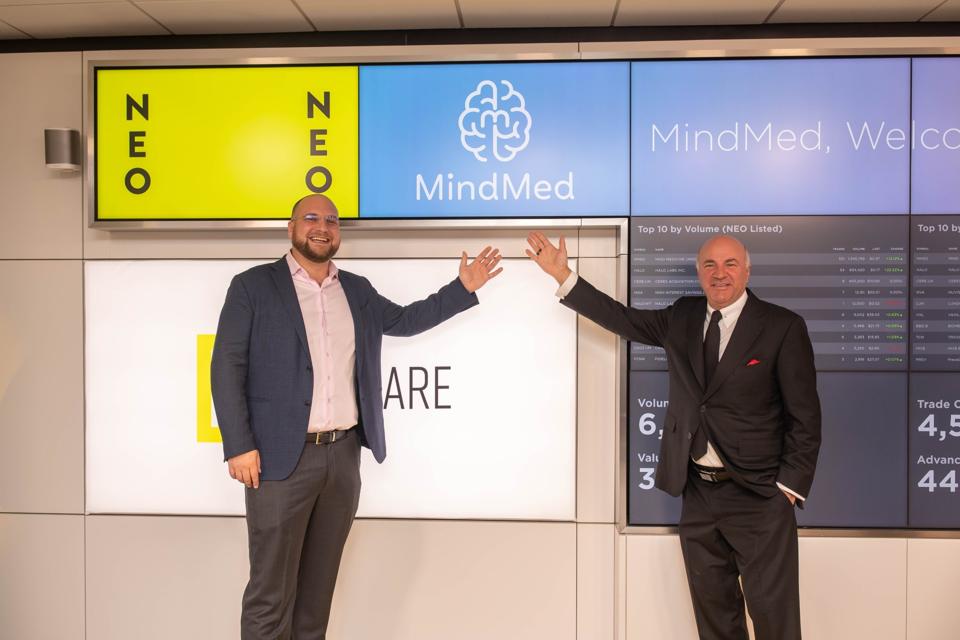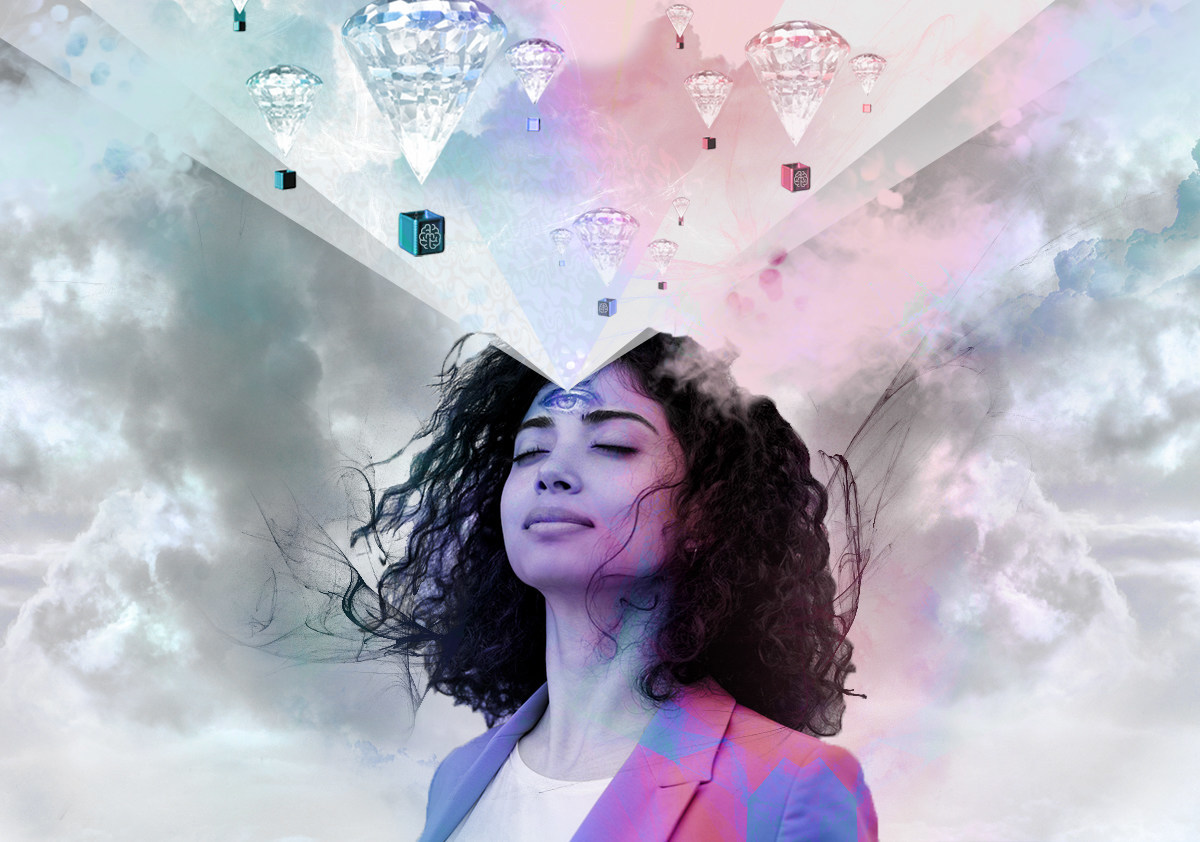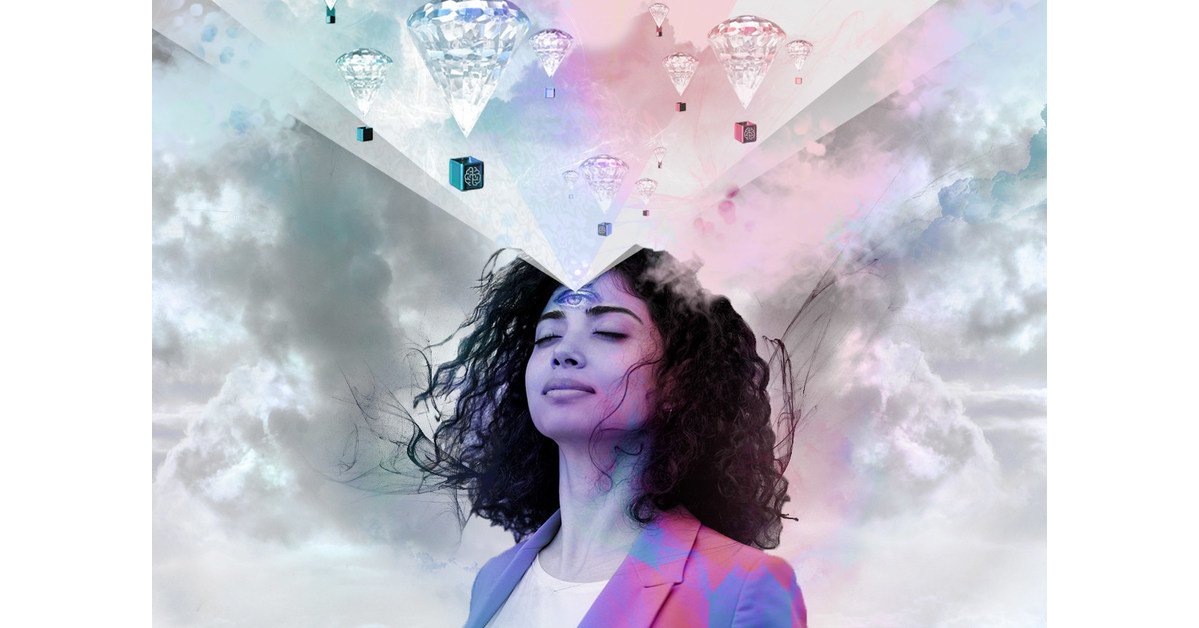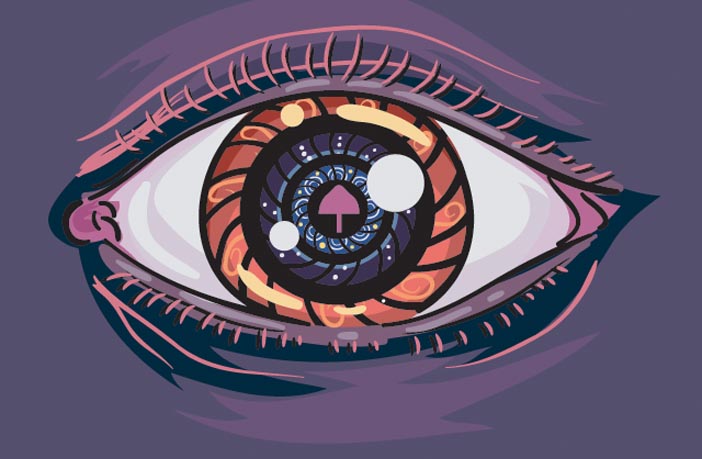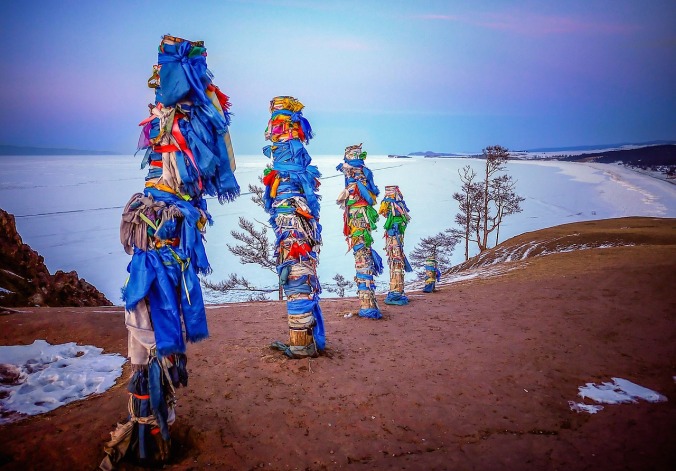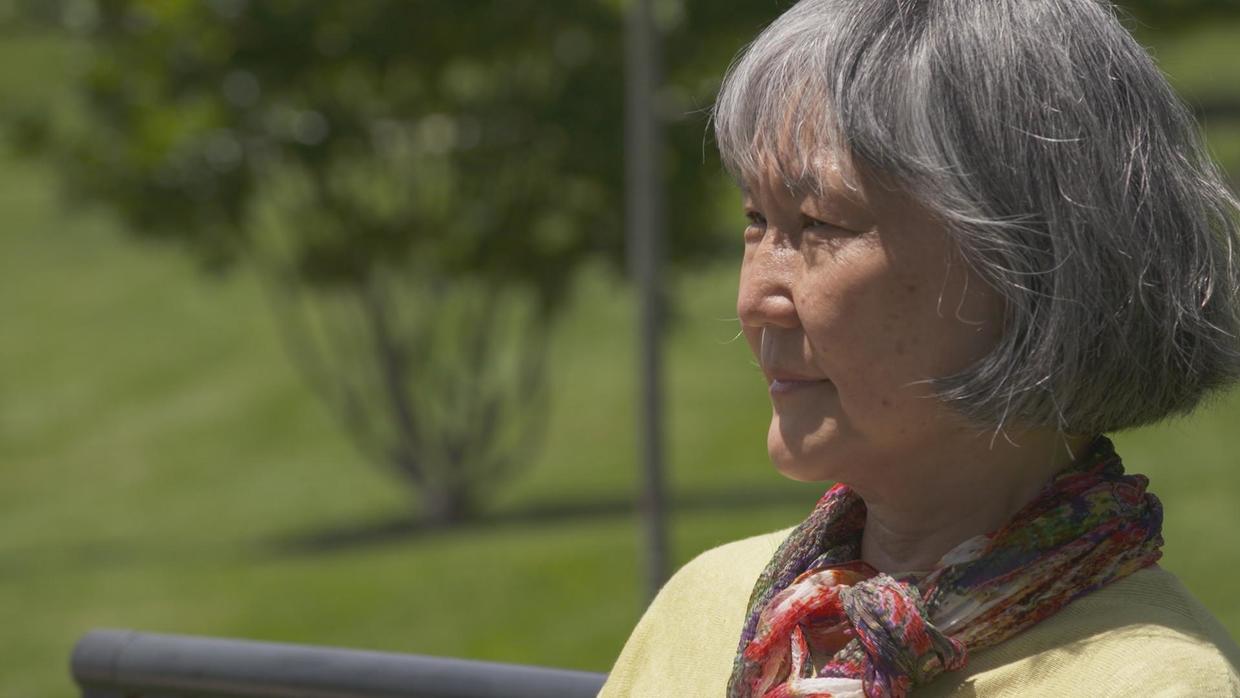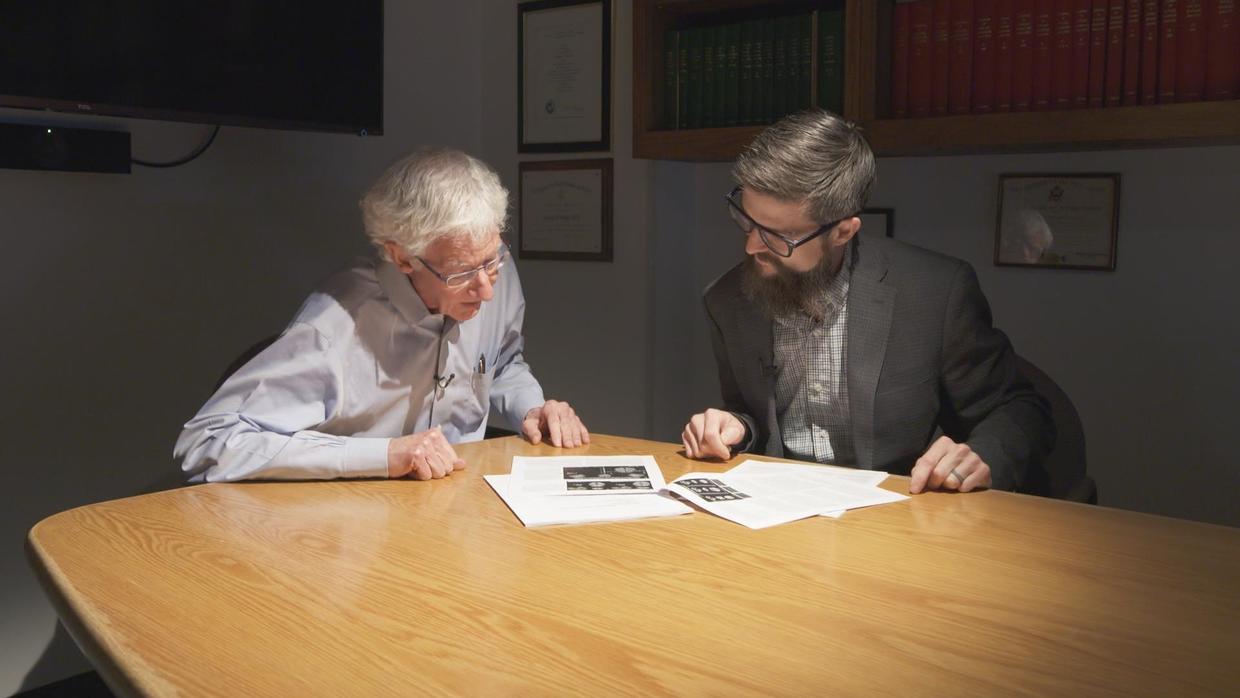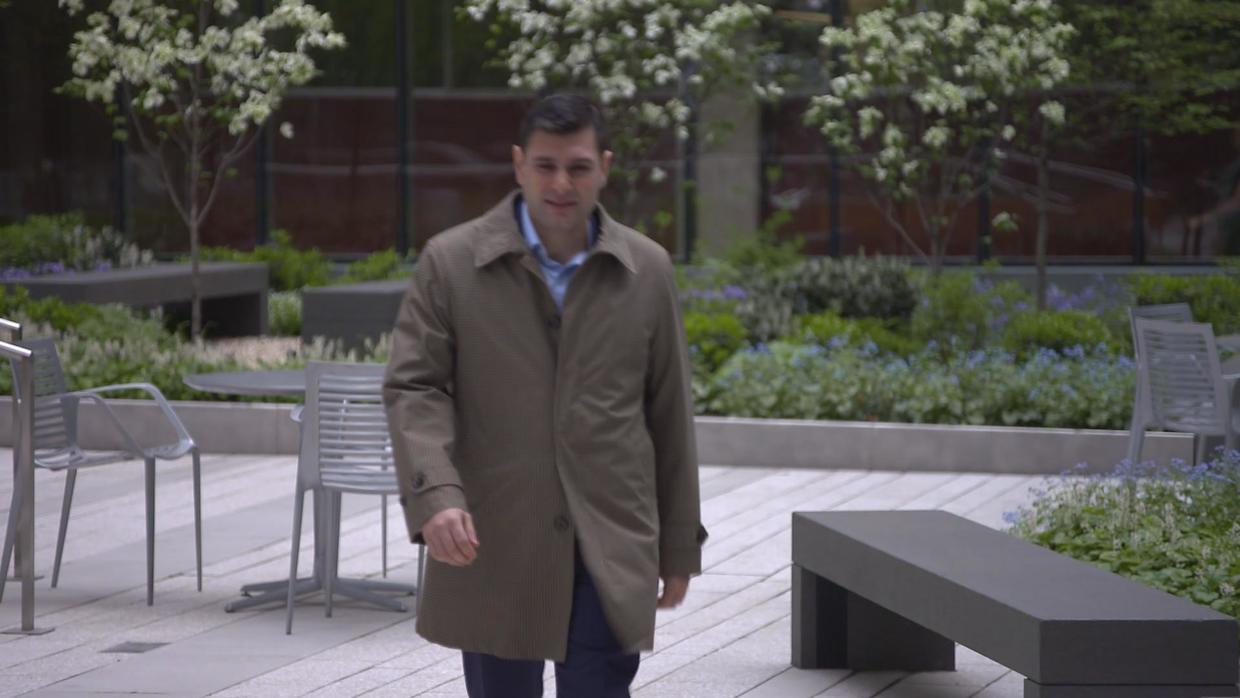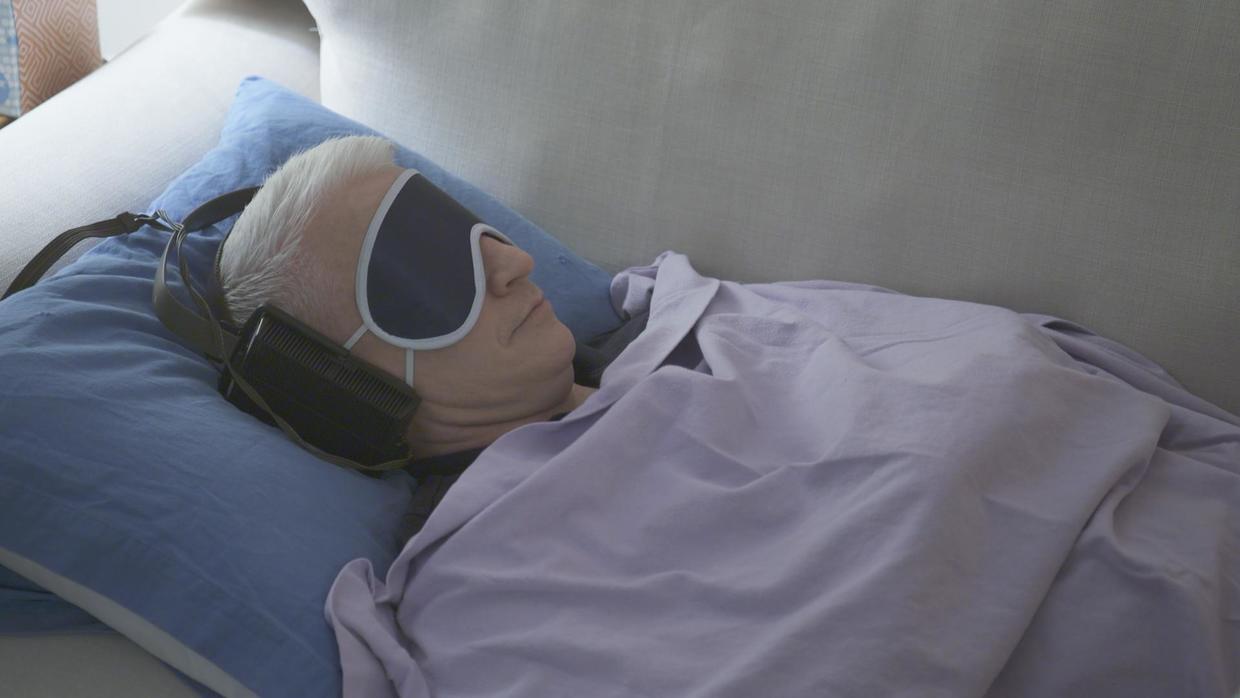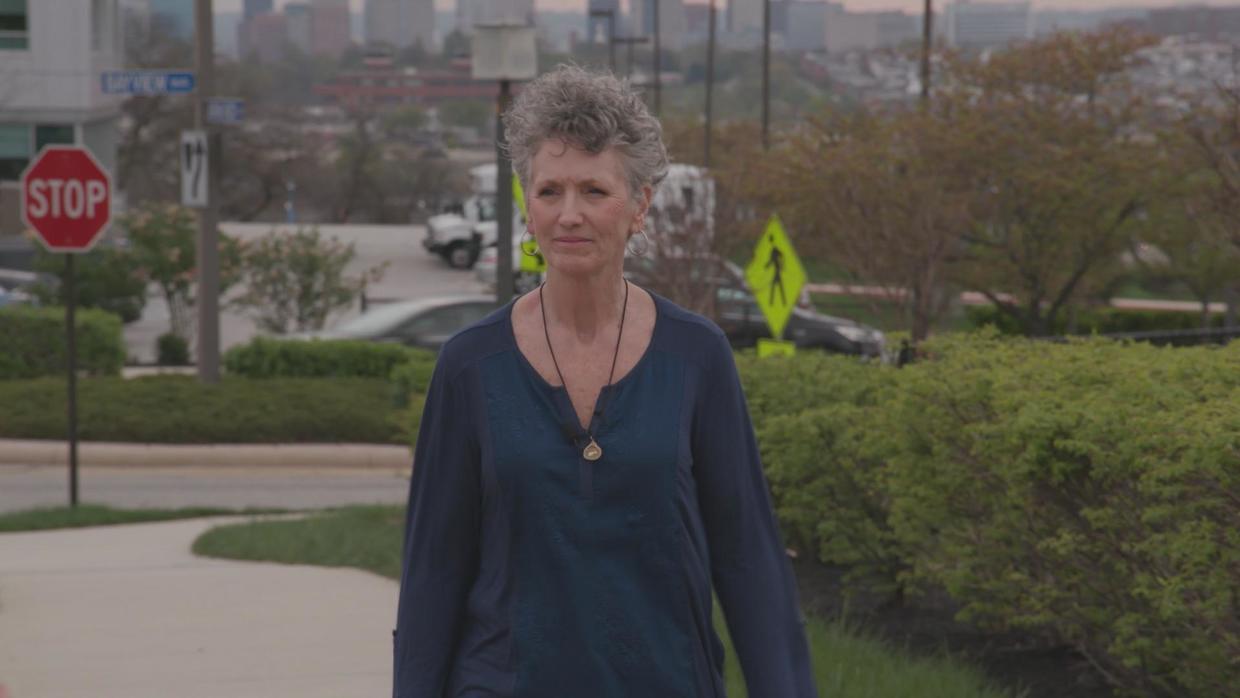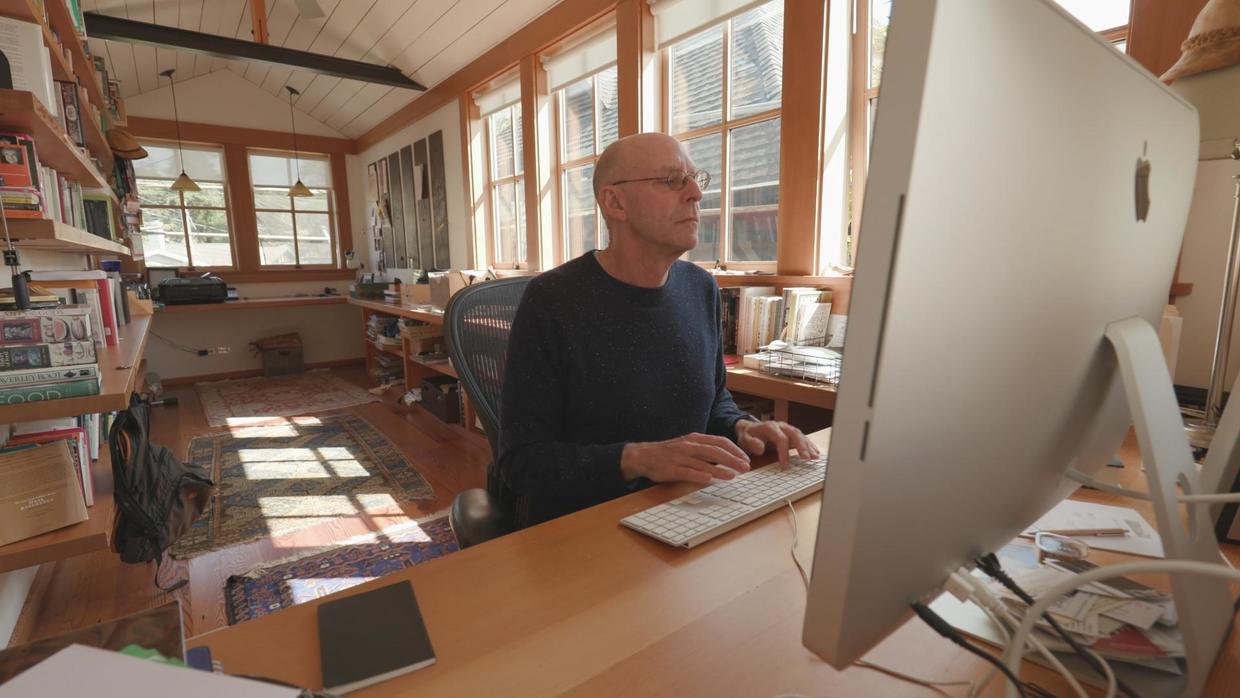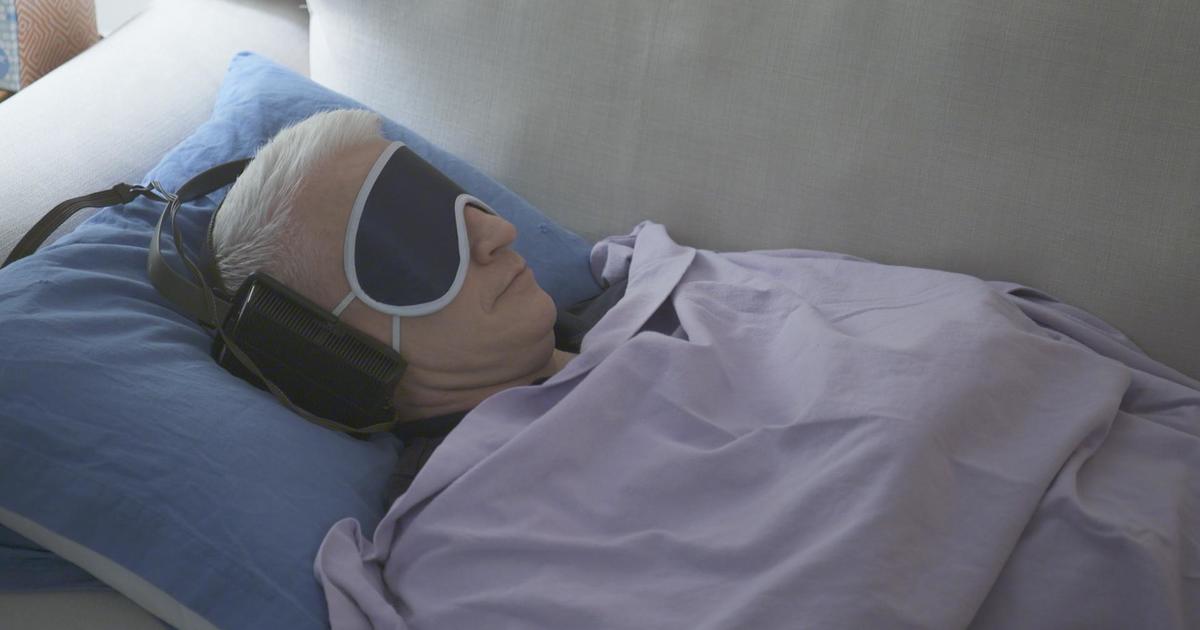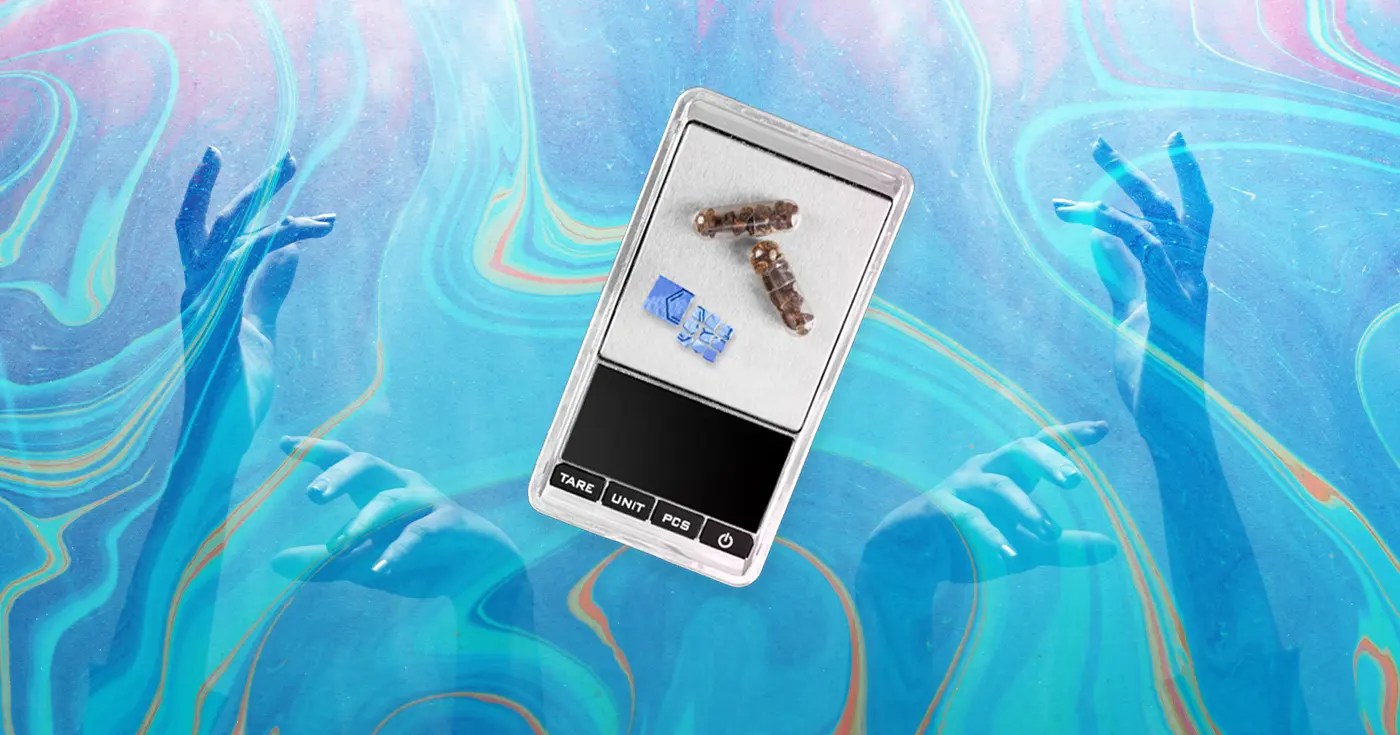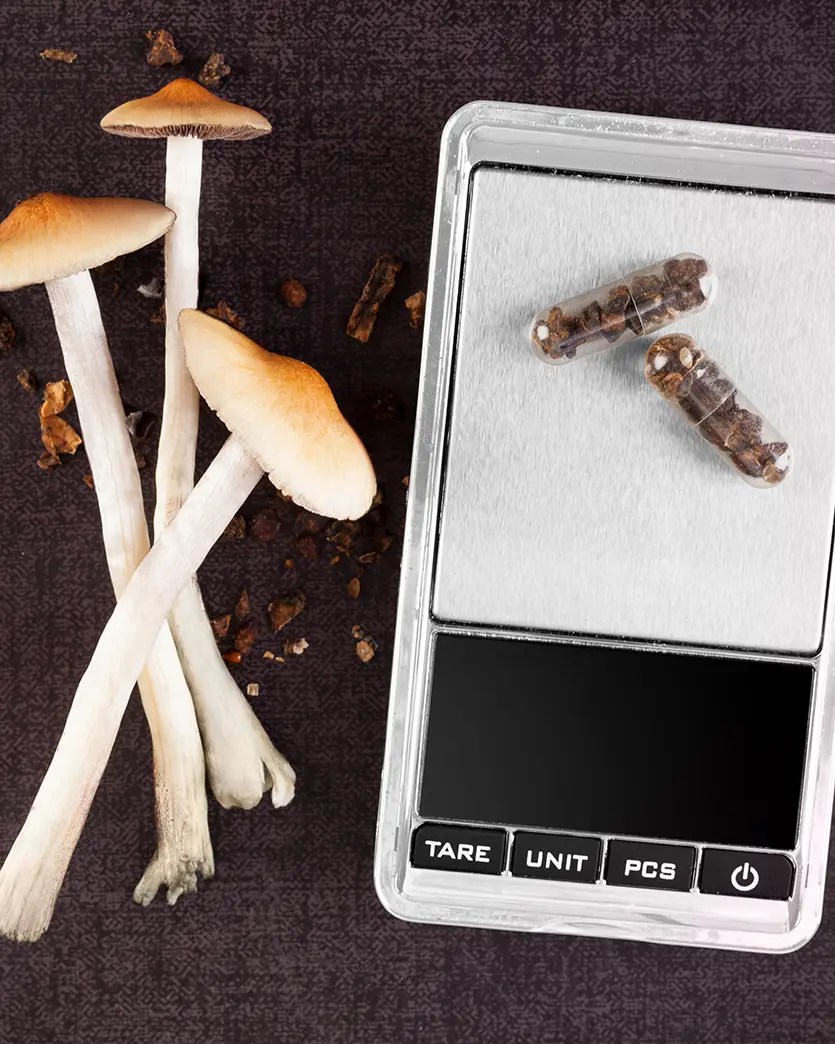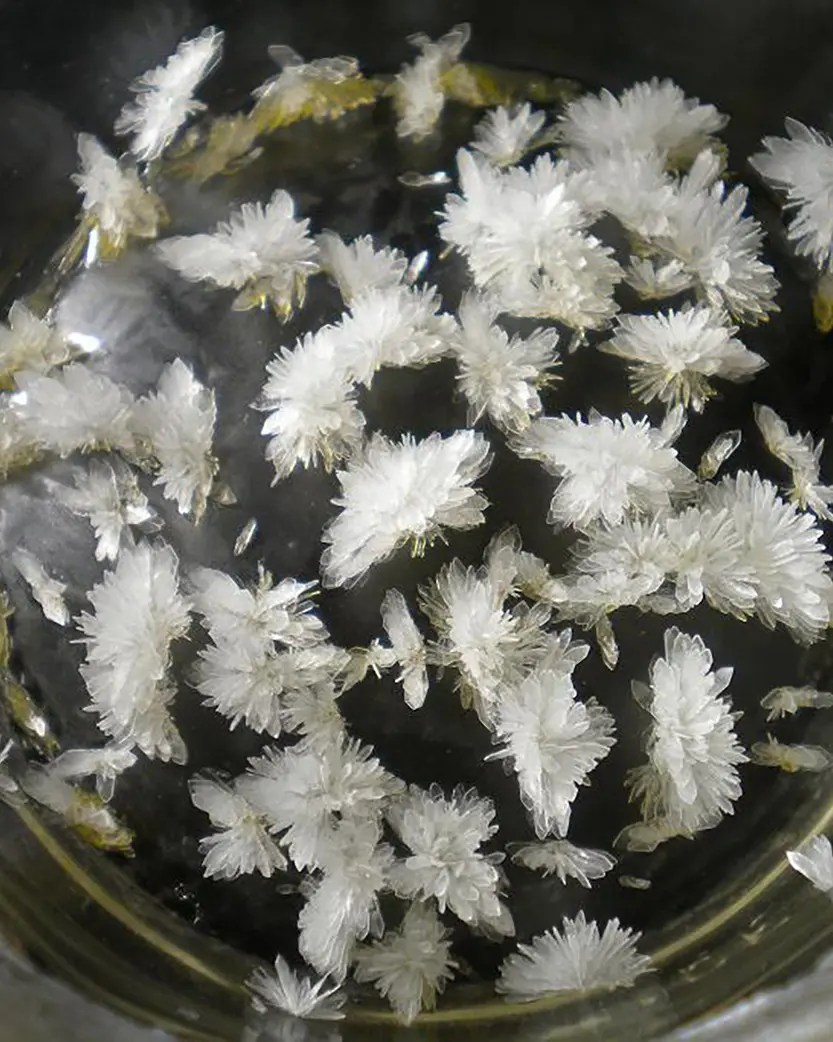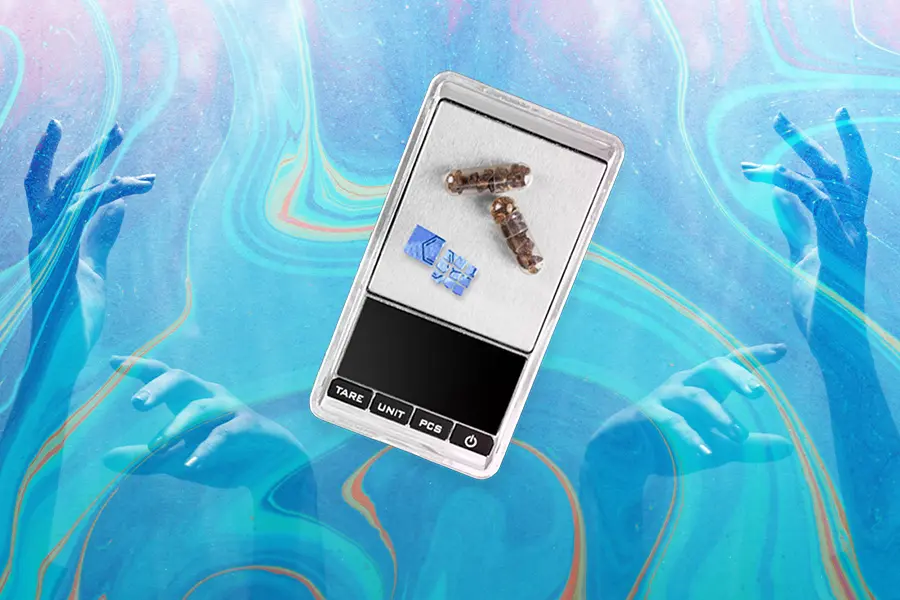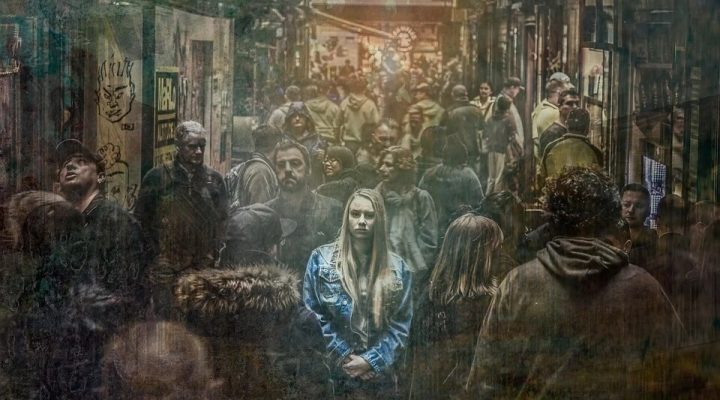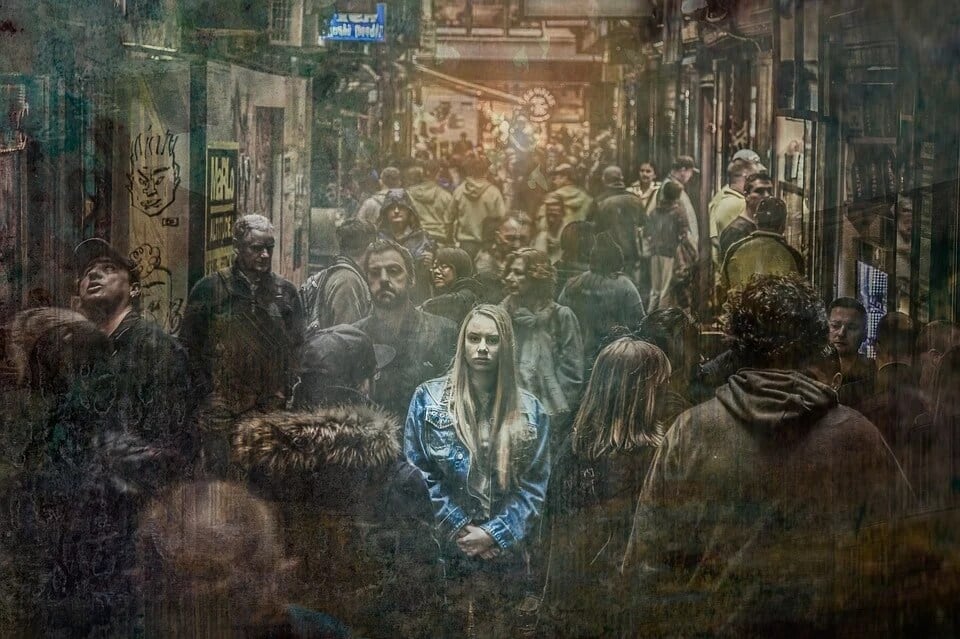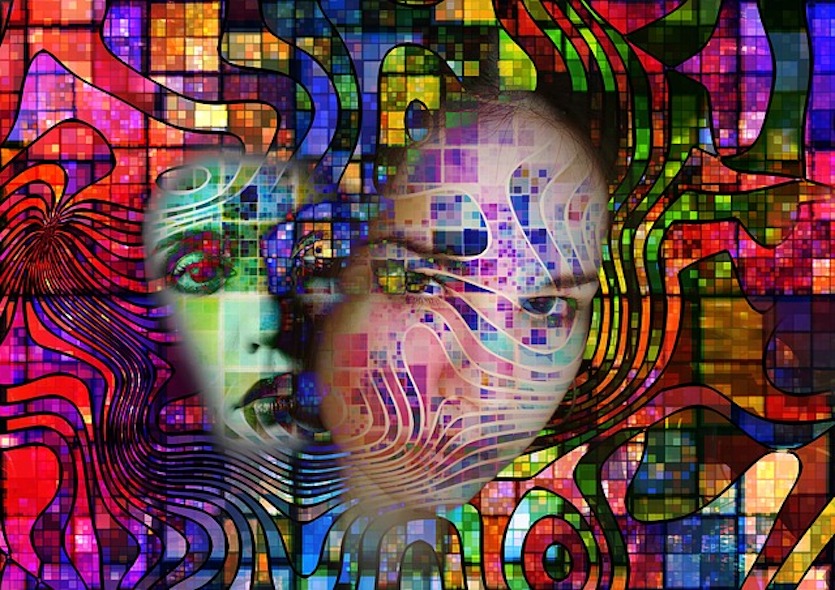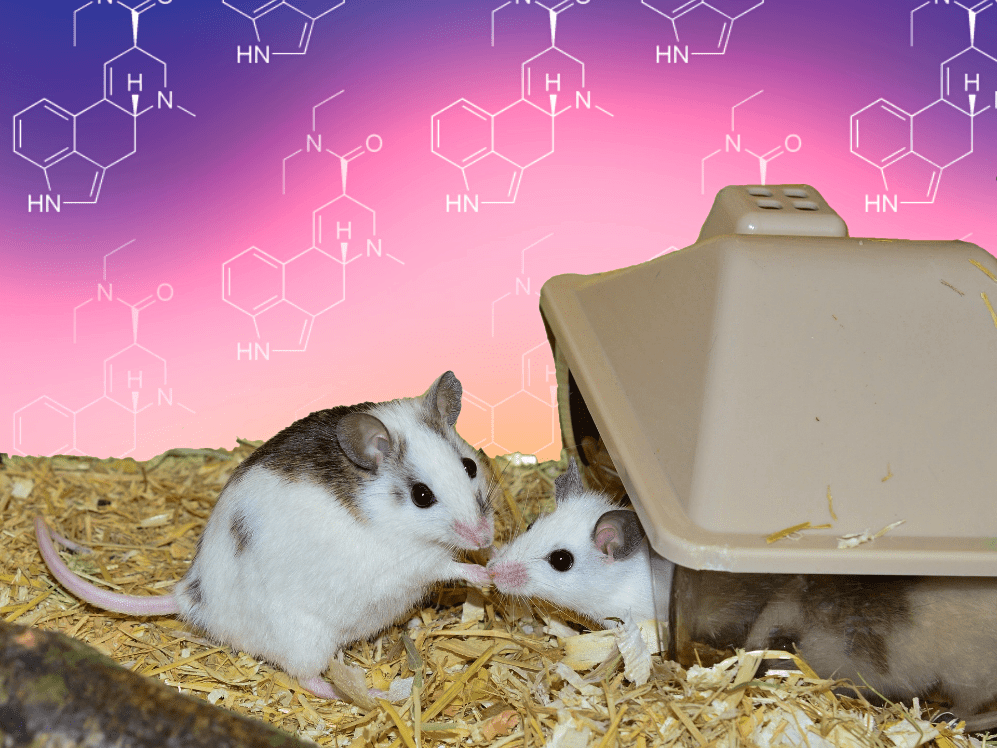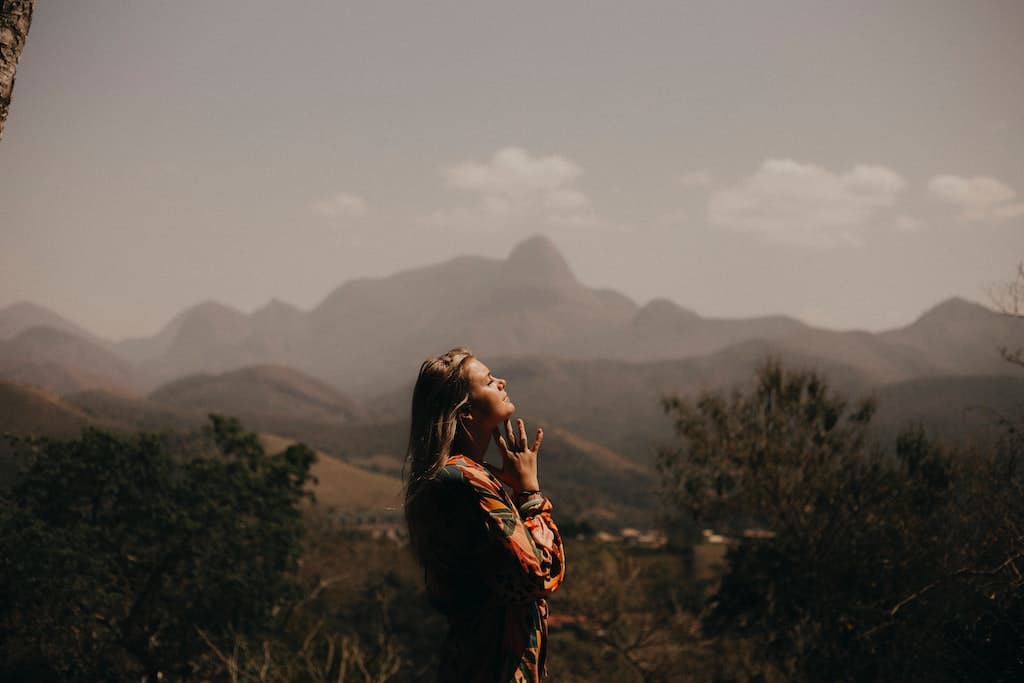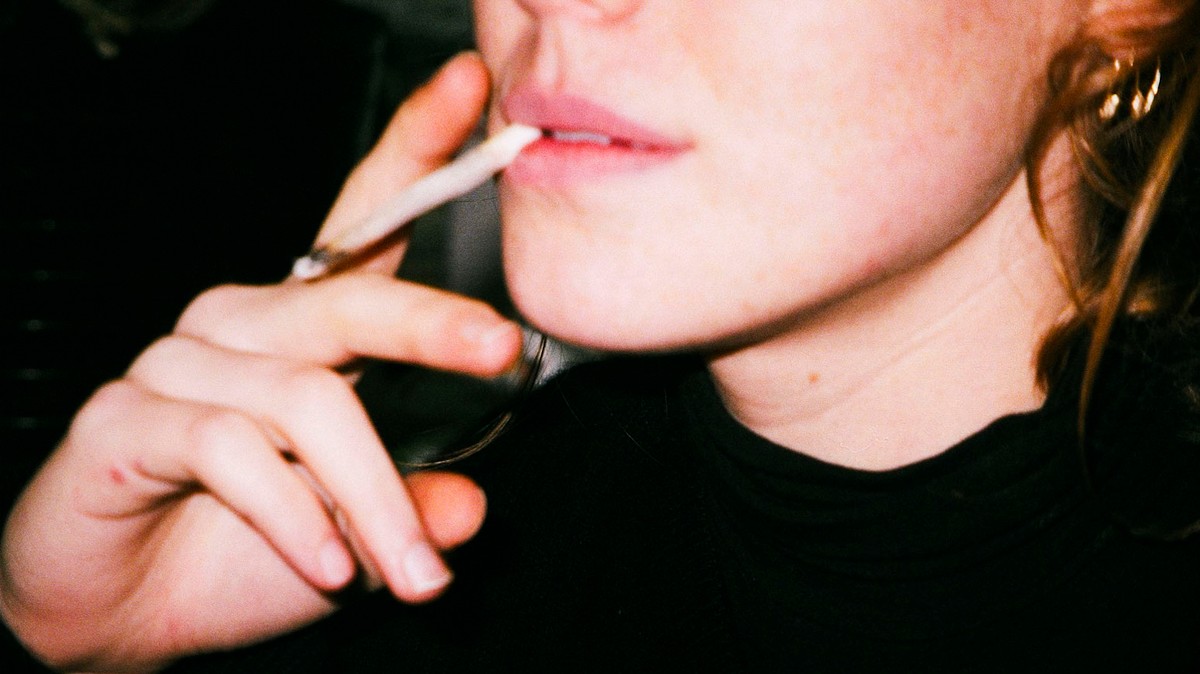Psilocybin could help people with anxiety*
by Anderson Cooper | CBS | 16 Aug 2020
Psychedelics are now being studied seriously by scientists inside some of the country's foremost medical research centers.
Study participants at some of the country's leading medical research centers are going through intense therapy and six-hour psychedelic journeys deep into their minds to do things like quit smoking and worry less.
And early results are impressive, as are the experiences of the studies' volunteers who go on a six-hour, sometimes terrifying, but often life-changing psychedelic journey deep into their own minds.
Carine McLaughlin: (LAUGH) People ask me,
"Do you wanna do it again?" I say,
"Hell no. I don't wanna go do that again."
Anderson Cooper: It was really that bad?
Carine McLaughlin
Carine McLaughlin: Oh, it was awful. The entire time, other than the very end and the very beginning, I was crying.
Carine McLaughlin is talking about the hallucinogenic experience she had here at Johns Hopkins University, after being given a large dose of psilocybin, the psychedelic agent in magic mushrooms, as part of an ongoing clinical trial.
Roland Griffiths: We tell people that their experiences may vary from very positive to transcendent and lovely to literally hell realm experiences.
Anderson Cooper: Hell realm?
Roland Griffiths: As frightening an experience as you have ever had in your life.
That's scientist Roland Griffiths. For nearly two decades now, he and his colleague Matthew Johnson have been giving what they call "heroic doses" of psilocybin to more than 350 volunteers, many struggling with addiction, depression and anxiety.
Anderson Cooper: Can you tell who is going to have a bad experience, who's gonna have a transcendent experience?
Roland Griffiths: Our ability to predict that is almost none at all.
Anderson Cooper: Really?
Matthew Johnson: About a third will-- at our-- at a high dose say that they have something like that, what folks would call a bad trip. But most of those folks will actually say that that was key to the experience.
Roland Griffiths and Matthew Johnson
Carine McLaughlin was a smoker for 46 years and said she tried everything to quit before being given psilocybin at Johns Hopkins last year. Psilocybin itself is non-addictive.
Anderson Cooper: Do you remember what, like, specifically what you were seeing or?
Carine McLaughlin: Yes. The ceiling of this room were clouds, like, heavy rain clouds. And gradually they were lowering. And I thought I was gonna suffocate from the clouds.
That was more than a year ago; she says she hasn't smoked since. The study she took part in is still ongoing, but in an earlier, small study of just 15 long-term smokers, 80% had quit six months after taking psilocybin. That's double the rate of any over-the-counter smoking cessation product.
Roland Griffiths: They come to a profound shift of world view. And essentially, a shift in sense of self that I think--
Anderson Cooper: They-- they see their life in a different way?
Roland Griffiths: Their world view changes and-- and they are less identified with that self-narrative. People might use the term "ego." And that creates this sense of freedom.
And not just with smokers.
Jon Kostakopoulos: Beer usually, cocktails, usually vodka sodas, tequila sodas, scotch and sodas.
Jon Kostakopoulos was drinking a staggering 20 cocktails a night and had been warned he was slowly killing himself when he decided to enroll in another psilocybin trial at New York University. During one psilocybin session, he was flooded with powerful feelings and images from his past.
Jon Kostakopoulos: Stuff would come up that I haven't thought of since they happened.
Anderson Cooper: So old memories that you hadn't even remembered came back to you?
Jon Kostakopoulos: I felt, you know, a lot of shame and embarrassment throughout one of the sessions about my drinking and how bad I felt for my parents to put up with all this.
He took psilocybin in 2016. He says he hasn't had a drink since.
Anderson Cooper: Do you ever have a day where you wake up and you're like, man, I wish I could have a vodka right now or beer?
Jon Kostakopoulos: Never.
Anderson Cooper: Not at all?
Jon Kostakopoulos: Not at all, which is the craziest thing because that was my favorite thing to do.
Jon Kostakopoulos
Using psychedelic drugs in therapy is not new. There were hundreds of scientific studies done on a similar compound - LSD - in the 1950's and 60's. It was tested on more than 40,000 people, some in controlled therapeutic settings like this one. But there were also abuses. The U.S. military and CIA experimented with LSD sometimes without patients knowledge.
Fear over rampant drug use and the spread of the counterculture movement, not to mention Harvard professor Timothy Leary urging people to turn on, tune in and drop out, led to a clamp down.
In 1970, President Richard Nixon signed the controlled substances act and nearly all scientific research in the U.S. Into the effects of psychedelics on people stopped. It wasn't until 2000 that scientist Roland Griffiths won FDA approval to study psilocybin.
Roland Griffiths: This whole area of research has been in the deep freeze for 25 or 30 years. And so as a scientist, sometimes I feel like Rip Van Winkle.
Anderson Cooper: And once you saw the results…
Roland Griffiths: Yeah. The red light started flashing. This is extraordinarily interesting. It's unprecedented and the capacity of the human organism to change. It just was astounding.
Anderson Cooper: It sounds like you are endorsing this for everybody.
Roland Griffiths: Yeah, let's be really clear on that. We are very aware of the risks, and would not recommend that people simply go out and do this.
Griffiths and Johnson screen out people with psychotic disorders or with close relatives who have had schizophrenia or bipolar disorder. Study volunteers at Johns Hopkins are given weeks of intensive counseling before and after the six-hour psilocybin experience; the psilocybin is given in a carefully controlled setting one to three times. To date, they say there's not been a single serious adverse outcome.
A psilocybin session
We were told we couldn't record anyone participating in the study while they were on psilocybin because it might impact their experience, but we were shown how it begins – without the psilocybin.
You lay on a couch, with a blindfold to shut out distractions and headphones playing a mix of choral and classical music – a psychedelic soundtrack with a trained guide, mary cosimano, watching over you.
Everything is done the same way it was for the LSD experiments scientists conducted in the 1950s and 60s. Some of the most dramatic results have been with terminal cancer patients struggling with anxiety and paralyzing depression.
Kerry Pappas: I start seeing the colors and the geometric designs and it's like 'oh this is so cool, and how lovely' and, and then, boom. Visions began.
Kerry Pappas was diagnosed with stage III lung cancer in 2013. During her psilocybin session, she found herself trapped in a nightmare her mind created.
Kerry Pappas: An ancient, prehistoric, barren land. And there's these men with pickaxes, just slamming on the rocks. So…
Anderson Cooper: And this felt absolutely real to you?
Kerry Pappas: Absolutely real. I was being shown the truth of reality. Life is meaningless, we have no purpose. And then I look and I'm still like a witness, a beautiful, shimmering, bright jewel. And then it was sound, and it was booming, booming, booming. Right here right now.
Anderson Cooper: That was being said?
Kerry Pappas: Yes.
"You are alive. Right here right now, because that's all you have." And that is my mantra to this day.
Kerry Pappas
Michael Pollan: It seemed so implausible to me that a single experience caused by a molecule, right, ingested in your body could transform your outlook on something as profound as death. That's-- that's kind of amazing.
Author Michael Pollan wrote about the psilocybin studies in a bestselling book called "How to Change Your Mind." As part of his research, he tried psilocybin himself with the help of an underground guide.
Anderson Cooper: The kind of things that cancer patients were saying, like, "I touched the face of God." You were skeptical about when you hear phrases like that?
Michael Pollan: Yeah. Or,
"Love is the most important thing in the universe." When someone tells me that I'm just like,
"yeah, okay."
Anderson Cooper: So you don't go for some of the phrases that are used?
Michael Pollan: No. It gives me the willies as a writer. And I really struggled with that cause during one of my experiences I came to the earth-shattering conclusion that love is the most important thing in the universe. But it's, that's Hallmark card stuff, right? And um, so…
Anderson Cooper: And yet while you were on it and afterward…
Michael Pollan: It was profoundly true. And it is profoundly true. Guess what? Um…
Anderson Cooper: There's a reason it's on a Hallmark card.
Michael Pollan: There is a reason. And one of the things psychedelics do is they peel away all those essentially protective levels of irony and, and cynicism that we, that we acquire as we get older and you're back to those kind of "Oh, my God. I forgot all about love." (Laugh)
Pollan said he also experienced what the researchers describe as ego loss, or identity loss - the quieting of the constant voice we all have in our heads.
Michael Pollan: I did have this experience of seeing my ego-- burst into-- a little cloud of Post-It notes. I know it sounds crazy.
Anderson Cooper: And what are you are without an ego?
Michael Pollan: You're, uh… (Laugh) You had to be there.
Michael Pollan
Researchers believe that sensation of identity loss occurs because psilocybin quiets these two areas of the brain that normally communicate with each other. They're part of a region called the default mode network and it's especially active when we're thinking about ourselves and our lives.
Michael Pollan: And it's where you connect what happens in your life to the story of who you are.
Anderson Cooper: We all develop a story over time about what our past was like and who we are.
Michael Pollan: Right. Yeah, what kind of person we are. How we react. And the fact is that interesting things happen when the self goes quiet in the brain, including this rewiring that happens.
To see that rewiring, Johns Hopkins scientist Matthew Johnson showed us this representational chart of brain activity. The circle on the left shows normal communication between parts of the brain, on the right, what happens on psilocybin. There's an explosion of connections or crosstalk between areas of the brain that don't normally communicate.
Anderson Cooper: The difference is just startling.
Matthew Johnson: Right.
Anderson Cooper: Is that why people are having experiences of-- seeing you know, repressed memories, or past memories, or people who have died or?
Matthew Johnson: That's what we think. And even the perceptual effect, sometimes the synesthesia, like, the-- the seeing sound.
Anderson Cooper: People see sound?
Matthew Johnson: Yeah, sometimes.
Anderson Cooper: I-- I don't even know what that means.
Matthew Johnson: Right, yeah. (LAUGH) It's-- it's--
Michael Pollan: Maybe the ego is one character among many in your mind. And you don't necessarily have to listen to that voice that's chattering at you and criticizing you and telling you what to do. And that's very freeing.
It was certainly freeing for Kerry Pappas. Though her cancer has now spread to her brain, her crippling anxiety about death is gone.
Kerry Pappas: Yeah, it's amazing. I mean, I feel like death doesn't frighten me. Living doesn't frighten me. I don't frighten me. This frightens me.
Anderson Cooper: This interview frightens you, but death doesn't?
Kerry Pappas: No.
It turns out most of the 51 cancer patients in the Johns Hopkins study experienced "significant decreases in depressed mood and anxiety" after trying psilocybin. Two-thirds of them rated their psilocybin sessions as among the most meaningful experiences of their lives. For some, it was on par with the birth of their children.
Kerry Pappas: To this day, it evolves in me.
Anderson Cooper: It's still alive in you--
Kerry Pappas: It's still absolutely alive in me.
Anderson Cooper: Does it make you happier?
Kerry Pappas: Yeah. And-- and I don't necessarily use the word happy.
Kerry Pappas: Comfortable. Like, comfortable. I mean, I've suffered from anxiety my whole life. I'm comfortable. That, to me, okay. I can die. I'm comfortable. (LAUGH) I mean, it's huge. It's huge.
*From the article here :
Study participants at some of the country's leading medical research centers are going through intense therapy and six-hour psychedelic journeys deep into their minds to do things like quit smoking and worry less.

www.cbsnews.com
